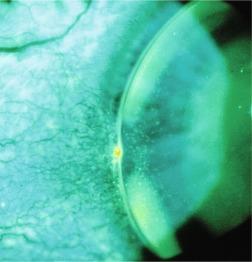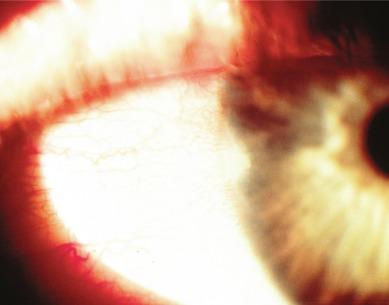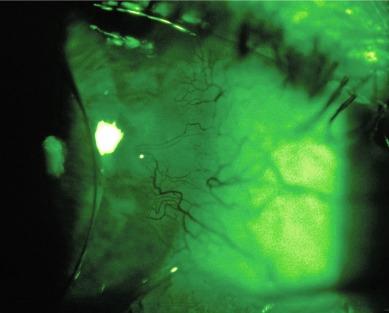Physical Address
304 North Cardinal St.
Dorchester Center, MA 02124
The limbus is prone to pathological changes for a variety of reasons. A rich capillary plexus is embedded in the limbus and these vessels may become engorged (see Chapter 15 ) or may constitute the platform from which vessels may penetrate into the cornea (see Chapter 25 ). The limbus is the site of the corneal stem cells, which are the primary source for the differentiation and proliferation of the corneal epithelium. A deficiency in limbal stem cells may lead to a plethora of corneal complications. A sharp transition in the topography of the anterior eye occurs at the limbus, whereby there is a pronounced flattening from the corneal surface to the conjunctival surface, forming a physical ‘ridge’. These three limbal features – the capillary plexus, stem cells and the limbal ridge – render the limbus susceptible to metabolic, immunological, toxic and physical insult, and all of these challenges may be induced or exacerbated by contact lenses.
It has long been recognised that the integrity of the limbus is more likely to be compromised by soft lenses because they rest in physical proximity to that tissue. The limbus is less likely to be insulted by rigid lenses that are smaller than the corneal diameter and only intermittently impinge on the limbus. Vascularised limbal keratitis (VLK) is an unusual complication of rigid contact lens wear, which, as the name suggests, is characterised in its most severe manifestation as an inflammation of the limbus in association with a process of vascularisation.
The condition is usually associated with extended rigid lens wear and has been demonstrated to occur with both low-oxygen permeable lenses and super-permeable rigid lenses – in the latter case with an incidence of only 0.8% of patients per year. VLK has also been observed in patients wearing rigid lenses on a daily-wear basis. It is always observed at the 3 & 9 o’clock corneal locations.
According to Grohe and Lebow, VLK can be characterised as a condition that develops in four grades, representing stages of increasing severity; these grades are outlined in the next sub-sections. This condition typically develops over a period of up to 6 months, but the time course can be more protracted, taking up to 24 months for the condition to become severe.
The patient is asymptomatic. The epithelium adjacent to the limbus appears disrupted as evidenced by superficial punctate staining. An apparent ‘heaping’ or accumulation of hyperplastic corneal and/or limbal epithelial tissue can be observed. This appears as an elevated, opaque or whitish elevated mass at the 3 & 9 o’clock corneal locations, with a diffuse, ill-defined border. The mass typically appears to bridge from the conjunctiva, over the limbus, on to the cornea, although it can form almost exclusively on the cornea or the conjunctiva, but always immediately adjacent to the limbus. The tear film meniscus at the edge of the rigid lens is absent or disrupted ( Fig. 16.1 ).

The patient will typically complain of mild ocular discomfort and increased lens awareness and may be aware that the eyes are red. Corneal infiltrates may be present, as well as mild overlying staining (grade 2) and mild conjunctival redness (grade 2) ( Fig. 16.2 ).

The patient will complain of mild to moderate discomfort and may report reduced lens wearing time. Moderate conjunctival redness (grade 3), more extensive corneal epithelial staining and mild limbal and conjunctival staining are observed. There may also be a greater infiltrative response. The conjunctiva and limbus may appear to be slightly oedematous. A vascular leash, emanating from the conjunctiva and across the limbus, encroaches on the hyperplastic epithelial mass ( Fig. 16.3 ).

Become a Clinical Tree membership for Full access and enjoy Unlimited articles
If you are a member. Log in here